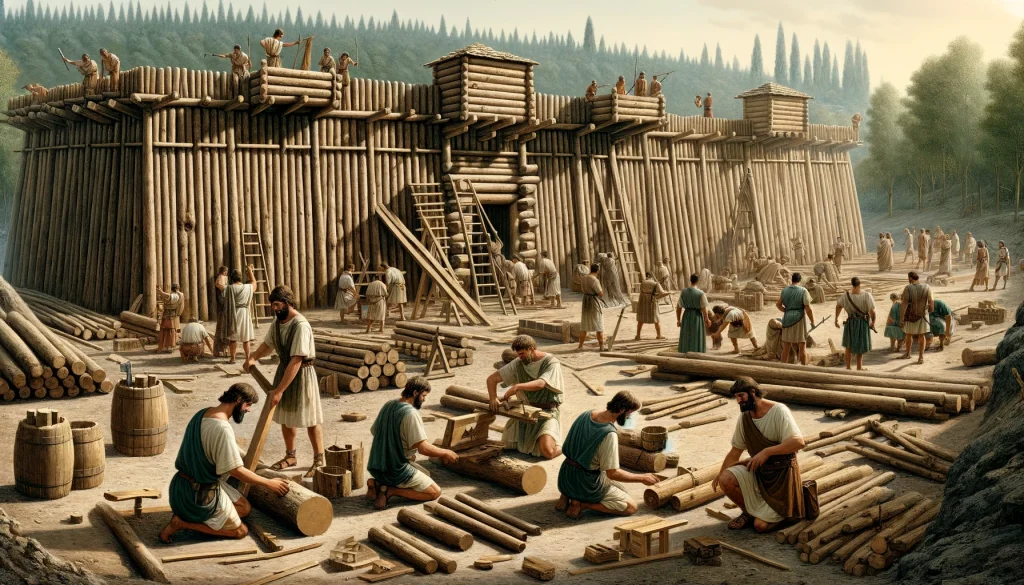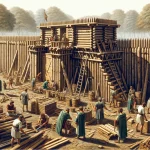The period between 136AD and 192AD the roman empire was ruled by four emperors; Antoninus Pius (138–161AD), Lucius Verus (161–169AD), Marcus Aurelius (161–180AD) and Commodus 177–192(AD).
Hadrian’s Successor
Before his death in 138 AD, Hadrian adhered to the established Roman practice of designating a successor. In 136 AD, he initially chose Lucius Ceionius Commodus, who adopted the name L. Aelius Caesar. However, this plan was thwarted as Commodus passed away before Hadrian, necessitating another selection. Hadrian then appointed Antoninus Pius, a distinguished senator renowned for his dedication to the Roman Empire and his responsibilities therein. Known for his integrity and decency, Antoninus Pius had been a consular since 120 AD and a member of the Emperor’s Omsilium, a council of advisors critical to the Roman magistrates.
During Hadrian’s final year, he observed Antoninus Pius’s administrative skills closely, granting him significant control over the Empire’s governance. This experience well-prepared Pius for his eventual ascension to the throne, which was met with a smooth transition, likely due to his esteemed reputation and consistent approach throughout his life.
Antoninus Pius’s governance focused on strengthening the Empire’s existing structures. He maintained effective governors in their positions longer than usual, valuing their ability to complete their tasks, a decision that was met with disapproval from the senate who viewed it as hindering the advancement of other promising officials.
Like Hadrian, Antoninus Pius aimed to maintain the Empire’s stability without unnecessary expansion. He diverged from Hadrian in terms of construction projects, opting for less grandeur. However, in Britain, he adopted an uncharacteristic approach, planning to extend the northern frontier, even at the risk of engaging in extensive warfare.
Antonine Wall

Hadrian’s Wall, an expensive endeavor, exceeded its initial budget due to construction modifications. To oversee its expansion, Hadrian appointed Q. Lollius Urbicus, formerly the governor of Lower Germany, as the governor of Britain. Urbicus began by extending the base at Corbridge, a strategic location where a road from Agricola’s era crossed the River Tyne. This construction, completed between 139 and 140 AD, hinted at a possible advance into Scotland, previously explored along its East coast. Despite Antoninus Pius’ general aversion to warfare, such preparations seemed warlike. Politically, it was likely intended to reinforce the northern frontier, making a Scottish incursion militarily sound.
Coinage from the era serves as a historical marker. By 143 AD, coins celebrated a British victory, suggesting the invasion of Southern Scotland occurred between 140 and 143 AD. The Historia Augusta, a 4th-century collection of imperial biographies, credits Antoninus with conquering the Britons through Urbicus and building a turf wall from the Forth to the Clyde rivers, forming the Antonine Frontier.
Interestingly, Priscianus was replaced by C. Papirius Aelianus in 146 AD. Urbicus, possibly recalled post-conflict, was succeeded by Cornelius Priscianus as British governor between 143 and 145 AD, during the second wall’s construction.
The Antonine Wall, similar in design to Hadrian’s Wall but less costly due to budget constraints from the first wall’s overspend, was constructed with a stone base and a deep front ditch. It lacked a Vallum, using economically driven defended annexes. The forts were closer together, and the wall, spanning the narrowest east-west distance, was shorter and more heavily fortified than its southern counterpart.
The Antonine Wall’s design allowed for more efficient defense and patrol, with fewer troops and fewer vulnerable gates. Notably, there were forts north of the wall overseeing large tribal gatherings.
The reoccupation of Scotland was meant to be lasting, as indicated by modifications to the Vallum at Hadrian’s Wall. The additional troops for the Antonine Wall were sourced from the Pennies, suggesting a peaceful phase in England.
The Antonine advance was a significant military and political triumph. Yet, the question remains: why undertake such a militaristic venture in a largely peaceful era? The primary reason appears to be controlling Scottish tribes. The wall’s strategic location, at the narrowest part of the country, required fewer troops due to its shorter length.
There’s also the propaganda angle. Expanding the Roman Empire would enhance Antoninus’ reputation, particularly against any insurrections. Notably, the Brigantes were again prominent. The continued deployment of elite troops to Britain implies ongoing challenges, underscoring Rome’s valuation of Britain as a crucial asset. The governorship of Britain was thus highly prestigious.
Retreat from Scotland (155–157 AD)

The initial Antonine occupation of Scotland came to an end around 155–157 AD due to a revolt by the Brigantes. Facing a shortage of reinforcements, the Romans, under Governor Gnaeus Julius Verus, retreated south and eventually quelled the uprising. The Antonine Wall was briefly reclaimed within a year, but by 163 or 164 AD, it was once again abandoned. The second phase of occupation might have been driven either by Antoninus’s efforts to safeguard the Votadini or by his ambition to expand the empire. However, the retreat back to the Hadrianic frontier happened shortly after Antoninus’s death, suggesting a reevaluation of the strategic value of the Antonine Wall.
Even after the withdrawal from the Antonine Wall, the Romans maintained a significant presence in Scotland, including the large fort at Newstead and seven smaller outposts, at least until 180 AD.
In the two decades after the frontier reverted to Hadrian’s Wall around 163/4, Rome’s attention was mostly on continental matters, especially issues in the Danubian provinces. The prevalence of buried coin hoards in Britain during this period hints at ongoing unrest. The substantial amount of Roman silver found in Scotland suggests that the Romans might have been paying tribute to the Picts, not just engaging in trade, to uphold treaty agreements.
In 175 AD, a sizable contingent of Sarmatian cavalry, numbering around 5,500, was sent to Britannia, likely to bolster forces dealing with unrecorded rebellions. By 180 AD, the Picts had breached Hadrian’s Wall, resulting in the death of the governor or commanding officer, an event Cassius Dio described as a major conflict during Commodus’s reign. Ulpius Marcellus was appointed as the new governor, and by 184 AD, he had established a fragile peace. However, Marcellus soon faced mutiny due to his stringent rules, and despite an attempt to appoint Priscus as a replacement, Marcellus narrowly escaped Britannia with his life.
The Roman military in Britannia remained defiant, sending a delegation to Rome to demand the execution of Tigidius Perennis, a Praetorian prefect, accusing him of unfair postings. Commodus acquiesced to their demands, executing Perennis, but this only emboldened the soldiers’ rebellious attitude.
Pertinax, the future emperor who lived from 126–193 AD, was then dispatched to Britannia to suppress the mutiny. He initially succeeded, but a riot among the troops left him injured and seeking recall to Rome. He later briefly succeeded Commodus as emperor in 192 AD.



